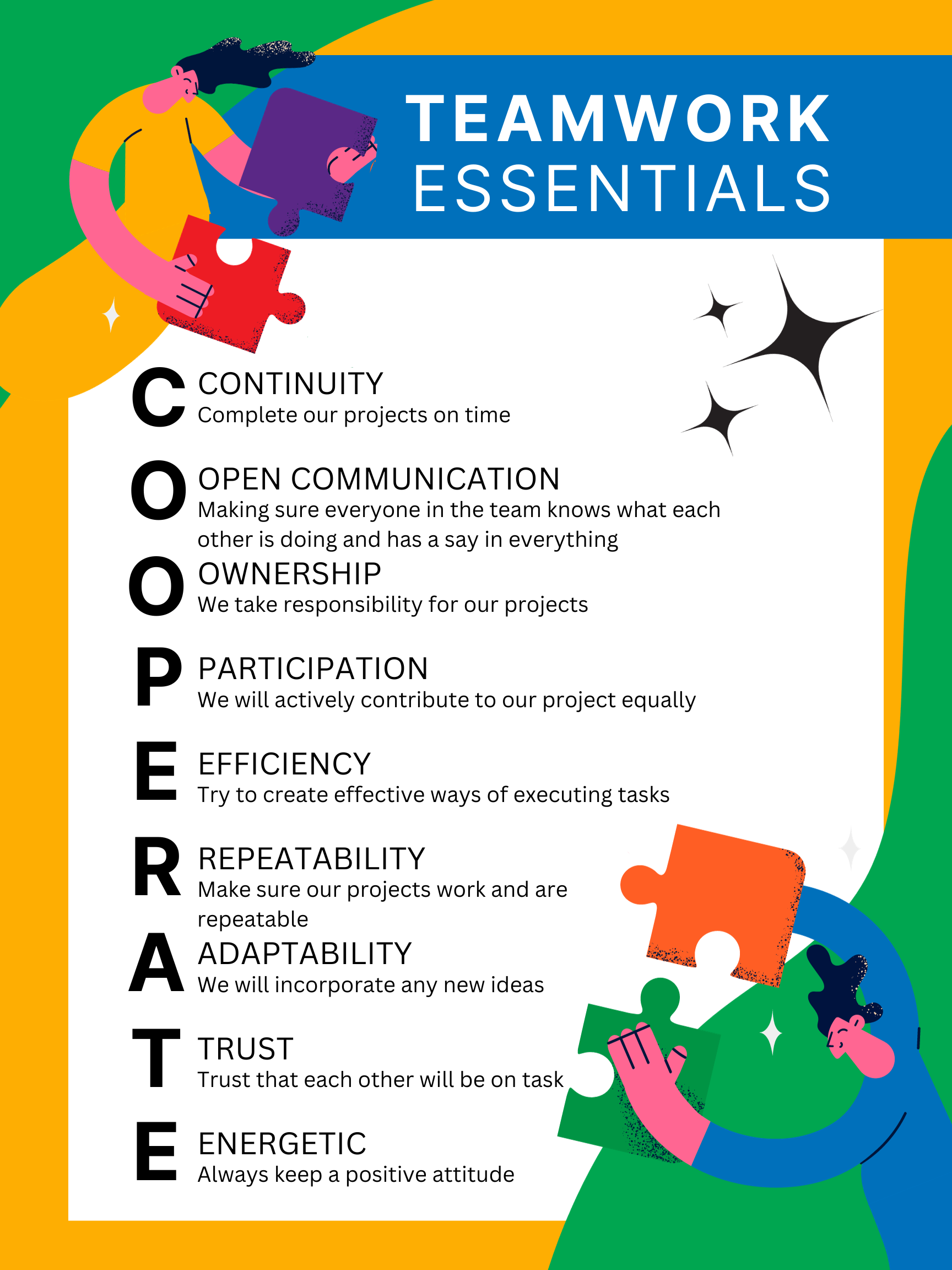Team Manifesto

Roles
- Eshaan: Scrum Master
- Brandon: Frontend/JavaScript
- Aaron: Backend/Python
- Ninaad: Dev Ops
PBL Vocabulary
-
Authentic Assessment: An evaluation method in PBL that focuses on real-world application of knowledge and skills.
-
Scaffolded Learning: The process of providing support and guidance to students as they work through a complex task in PBL.
-
Rubric: A scoring guide used to assess the quality of student work and their performance on PBL projects.
-
Reflection: A critical step in PBL where students analyze their learning experiences, identify challenges, and plan for improvement.
-
Project Driving Question: A central question that guides the inquiry and problem-solving process in PBL.
-
Formative Assessment: Ongoing assessments during a PBL project that inform instruction and help students make improvements.
-
Summative Assessment: An evaluation of student learning at the end of a PBL project to determine overall understanding and achievement.
-
Team Roles: Assigned responsibilities within a PBL team to ensure efficient project completion.
Agile Vocabulary
-
Scrum: A specific Agile framework that divides work into time-boxed iterations called sprints.
-
User Story: A concise, informal description of a feature or functionality from an end-user perspective.
-
Product Backlog: A prioritized list of features, enhancements, and bug fixes in Agile development.
-
Sprint Planning: The process of selecting and prioritizing items from the product backlog for a sprint.
-
Daily Standup: A short daily meeting where team members in Agile projects share progress, challenges, and plans.
-
Velocity: A measure of the amount of work a development team can complete in a single sprint.
-
Product Owner: The person responsible for defining and prioritizing the product backlog in Agile.
-
Sprint Review: A meeting held at the end of a sprint to demonstrate completed work to stakeholders.
-
Kanban: An Agile methodology that emphasizes visualizing work, limiting work in progress, and continuous improvement.
-
Burn Down Chart: A visual representation of the remaining work in a sprint or project over time.